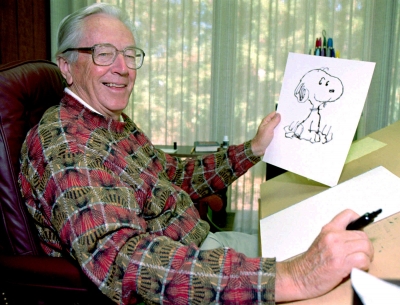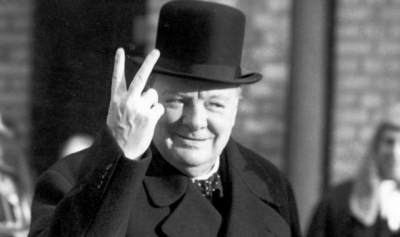Who is creator of comic strip "Peanuts"?

Who was Charles M. Schulz?
Charles Schulz was a cartoonist from the U.S., who created the "Peanuts" comic strip that ran from October 2, 1950, to February 13, 2000. Born in Minneapolis, Minnesota, on November 26, 1922, Schulz grew up reading the comics section of the newspaper.
Inspired by these black and white figures, Schulz started drawing pictures of his favorite cartoon characters from a young age. One of his drawings, Spike, the family dog even got published in a national newspaper. Schulz was so proud of this moment that he made up his mind to become a cartoonist when he grew up.
Getting published
Schulz's first group of regular cartoons, a weekly series of one-panel jokes called "Lil' Folks", was published from June 1947 to January 1950 in the "St Paul Pioneer Press". It drew the attention of the United Feature Syndicate of New York which decided to publish Schulz's new comic strip. However, the syndicate wanted to change the name of the strip because the name "Li'l Folks" resembled two other comics of the time. So, to avoid confusion, the syndicate settled on the name "Peanuts". But Schulz always disliked the title. Even though he didn't like the name, Schulz couldn't deny the fact that the strip was successful. The cartoon began appearing in seven newspapers with the characters Charlie Brown, Shermy, Patty and Snoopy. Within a year, the strip appeared in 35 papers, and by 1956, it was in over a hundred. At one time, it was read by 355 million people all over the world.
What made it special?
The cartoon was centred on the simple and touching figures of a boy and his dog. Snoopy. Adults were never seen in the panels, and the action involved ordinary, everyday happenings. The comical defects of humanity were reflected through Schulz's gentle humour, which made the cartoon strip appealing Schulz always insisted that only he would draw the characters and not allow others to do the draftsmanship. As the strip became more popular, new characters were added. Schulz received the Reuben Award twice from the National Cartoonists Society in 1955 and 1964.
OH REALLY?
- "Peanuts" appeared in 2,300 newspapers in over 19 languages. Reruns and specials continue even today
- Schulz is credited with coining the phrase "Good Grief
- He wrote a book, Why, Charlie Brown. Why? to help children understand the subject of cancer.
- Schulz was a huge supporter of the space programme. The 1969 Apollo 10 command module was named Charlie Brown and a lunar module was named Snoopy.
Picture Credit : Google
